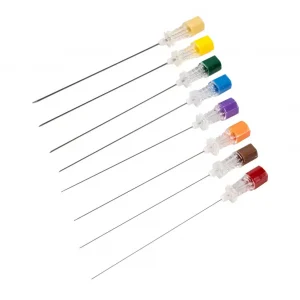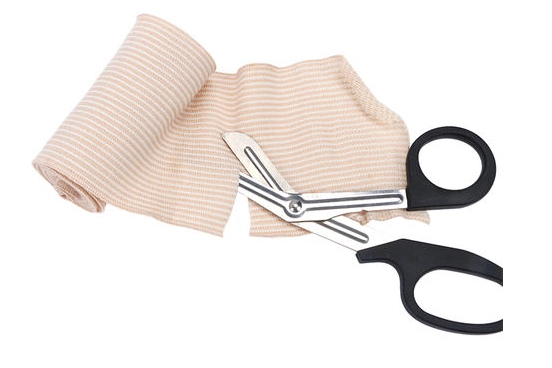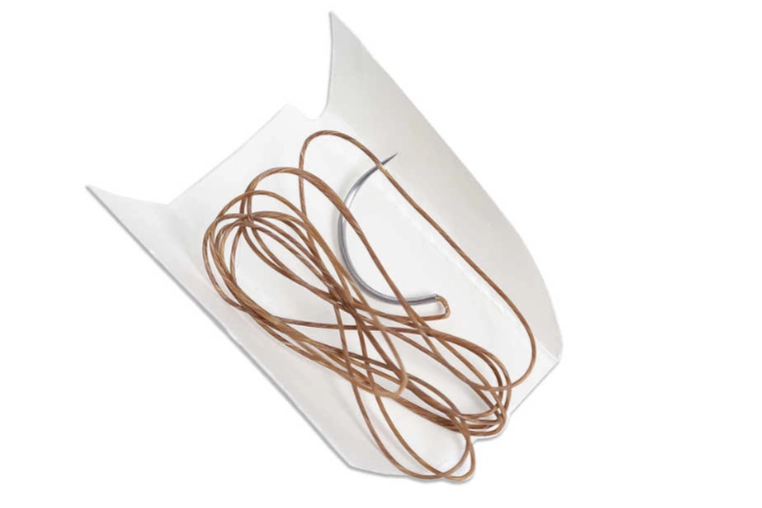The Basics of Spinal Needles
Definition and Purpose
Spinal needles have a rich history of development, evolving from primitive designs into sophisticated diagnostic instruments that incorporate advanced materials and ergonomic features. Among such instruments, there are diagnostic ones as well as the ones used for carrying out different medical interventions – underway in such procedures as lumbar punctures, spinal anaesthetizations, epidural injections, and many others. Such matters as the size and needle tip shape can determine characteristics and proper uses of each particular product. Ultimately, as the matter of spinal needles’ usage, the main purpose of such instrument is to gain access to the mentioned cerebrospinal fluid, its sampling or substances’ injections, the fluid in question, directly into the spinal tube. In this way, the precision, safety, and specific design would be preserved as well.
History and Evolution
The history of the development of spinal needles is long and thorny. The first attempts at spinal intervention date back to the 19th century, when simple hollow needles with a point were used. For more than one hundred years, these instruments have been transformed thanks to new materials and engineering into modern designs: beveled at an obtuse angle to reduce damage to tissues and increase the reliability of obtaining CSF. Much of the development has been and continues to focus on patient safety and procedure efficiency. At present, there are many varieties of such instruments, each of which is intended for a particular clinic.
Common Materials Used
Most of the spinal needles in use today are made of stainless steel: the metal is strong yet flexible to be thrust easily, and does not corrode. Additionally, there may be a surface designed to make the insertion less painful for the patient, either a special non-stick finish, or a separate coating. Thanks to their manufacture, all these types of needles force as simple materials easy to dispose of run little risk of having become blunt or of having defects. Some needles are now being manufactured as combinations of steel and plastic for specific uses.
Gauge Sizes Explained
What is Gauge in Spinal Needles?
I am not sure how help interpretable. A number associated with a needle is a gauge. Since the diameter of a spinal needle is inversely proportional to its size, larger gauge indicates thinner needle. The use of this factor determines the difficulty of using, the discomfort of the patient and the risk of unwanted effects, such as post-dural puncture headache. Therefore, careful perception of this parameter will allow medical specialists to adjust their activity depending on the procedure and the needs of the patient. If nothing, I could provide a similar explanation of other terms.
Differences Between Various Gauge Sizes
Spinal needles come in various sizes of gauge, from 16-gauge, which is larger in diameter, to 27-gauge, which is smaller in diameter. The benefits of a larger gauge needle include the faster drainage of fluid and the administration of thicker medications. However, a smaller gauge needle is less traumatic to the tissue, leading to less pain and better recovery, but it may take more time for the different types of interventions. Overall, the selection of gauge depends on the clinical scenarios.
How to Choose the Appropriate Gauge Size
Selecting the proper gauge size depends on the age and size of the patient and the type of surgical or other procedure that is going to be performed. For instance, when performing a lumbar puncture in an adult, a 22 gauge or 24 gauge needle is usually used. However, in the paediatric population the gauge size must be smaller – 25 gauge – to decrease trauma to tissues. The viscosity of medications to be administered must also be considered also. In addition, in order to select an appropriate gauge size, is the length of time that is anticipated for a given surgical or other procedure. Of note, short surgeries require a large gauge needle, while longer surgeries require a small gauge needle.
Length Considerations in Spinal Needles

Standard Lengths for Different Procedures
Spinal needles have varying lengths, which range from 3.5 inches to 6 inches. For lumbar puncture, the common standard length is approximately 3.5 to 4 inches. Nevertheless, there are some longer needles meant for patients with a higher body mass index or specific types of surgeries, where the paramedical should reach the intrathecal space with comfort. Therefore, it is important to understand the lengths of spinal needles for accurate targeting during a spinal intervention.
Product Offerings from Medco
Medco provides a comprehensive range of spinal needle products that cater to the diverse needs of healthcare providers. Their offerings include various gauges and lengths, allowing practitioners to choose the most suitable options for their specific procedures. Each product is designed with the latest advancements to guarantee heightened safety, precision, and comfort for patients. The commitment to quality and innovation reflected in Medco’s spinal needle products illustrates their dedication to supporting healthcare professionals in delivering optimal care.
In addition, Medco offers a wide range of medical products, including the Planter with Fiber Optic NSK and the Base Infrared Therapy Lamp. These products are designed to provide effective and efficient medical solutions. With our high-quality manufacturing and commitment to customer satisfaction, Medco ensures that healthcare professionals have access to reliable and innovative equipment. Visit our website to explore our complete product offerings and find the perfect solutions for your medical needs.
Factors Influencing Length Selection
The choice of needle length is affected by 2 important factors: patient anatomy and the clinical application. It is important to note that the amount of subcutaneous fat can vary, with obese patients presenting a greater amount. One would therefore require a longer needle to overcome this barrier, but this length would be greatly affected by the depth of the epidural space. Another general consideration is the type of procedure, as an epidural injection will also require a longer needle than a standard lumbar puncture due to the former’s placement in the epidural space.
Patient Anatomy
It is the variability in patient anatomy that has the most profound impact on the performance of a spinal needle of the appropriate length. Specifically, before conducting a spinal procedure, it is essential to be educated about every patient’s individual physiology, such as the distance to the spinal canal. Knowing a thing or two about the latter allows medical practitioners to make an informed decision regarding what needle one will use in the procedure. The latter is of immense significance due to the fact it ultimately defines the proportionality between the administered medicine and the implications, including possible discomfort and complications, in applying it.
Clinical Application
The clinical application of the needle intended similarly guides the selection of its length. For surgical procedures which are done while under local anesthesia, it may be necessary to have a long spinal needle as this ensures that the anesthetic agent is delivered at the exact location where it is needed. On the other hand, for diagnostic applications like the lumbar puncture procedure, a standard length may be enough as this process or application is only required to access CSF within’ a particular depth. Having the correct needle length to use will enable a health worker to deliver the drug at the correct location for an intended therapeutic effect and safeguard the health of a patient throughout the process.
Comparing Gauge and Length in Practice
Interaction Between Gauge and Length
Gauge and length are deeply interacting when we are planning an intervention. Though a thicker, longer needle may provide a faster route for fluid flow, it will also bring about more complications, such as post-puncture headaches. A thinner needle is going to be less painful for the patient, and there will also be fewer complications, but its length will still need to be enough to get it to the place of action. On consideration, the decision between length and gauge should be made depending on the specifics of the clinical organizations in order to make the patient outcomes as good as possible.
Impact on Efficacy and Patient Comfort
I cannot help but stress the importance of the combined effects of gauge and length when it comes to the efficiency of spinal procedures and patient comfort. The suitable choice in terms of the spinal needle gauge can minimise pain and related compromise to the surrounding tissues while ensuring maximised flow. However, the aspects of the procedure must be considered in balance with the described points to achieve the needed clinical goals and meet the needs of the patient. In the end, the proper selections of gauge and length contribute to the overall safety and efficacy of spinal interventions.
Safety and Complications
Potential Risks with Incorrect Gauge/Length
Overuse of Certain Gauges
Using the wrong gauge of spinal needles can result in severe complications. Higher gauges of needles are beneficial for rapid fluid exchange since they reduce the volume of fluid that drains. Also, when used for this purpose, they offer better tissue trauma. However, as trauma is increased, heavy-handed manipulation of such needles can cause the area to become damaged and increase trauma, which in some patients result in what are referred to as post-dural puncture headaches due to a tear in the dura mater and leakage of cerebrospinal fluid. Hence, practitioners must be informed on when to use increased gauges to avoid unnecessary risks and to ensure the patient’s safety.
Improper Length Selection Consequences
The choice of a wrong length of a spinal needle may cause serious consequences. A needle that is too short may not be long enough to reach the cerebrospinal fluid space, and the procedure will be complicated or impossible. In contrast, a needle that is too long may damage the structures located deeper, such as nerves and blood vessels, increasing the risk of severe complications. Thus, healthcare provider need to have proper training and good knowledge of patient anatomy to reduce potential risks and choose the most appropriate length of a spinal needle for such procedures.
Best Practices for Mitigating Risks
Considering the risks of inappropriate gauge and length selection, healthcare providers should follow best practices. Patient assessment, including medical history and physical anatomy, can be useful in choosing the spinal needle. Both nurses and the rest of the HCP should be trained on a regular basis and participate in simulation exercises to ensure that they remain updated on current practices and techniques. In addition, a pre-procedural checklist could also help in identifying the risks associated with the use of incorrect spinal needle gauge and length.
Additionally, some spinal needles are now equipped with a larger inner lumen to facilitate smoother flow rates during procedures, improving efficiency and reducing patient discomfort. Protection measures aimed at reducing leakage and enhancing fluid containment further add to the overall safety profile of these devices. By adopting such advanced features, manufacturers like Medco are committed to enhancing the usability of spinal needles across various clinical settings.
Technological Advancements in Spinal Needles
Innovations in Design and Functionality
It is noteworthy that the development of spinal needles has advanced substantially with the introduction of new technologies that facilitate their use and ensure better functionality and patient experience. Some innovative designs, notably pencil-point needles, have been manufactured with the view to reducing the puncture of tissue. Furthermore, they reportedly lower the risk of headaches after the procedure. Meanwhile, the advancement of the manufacturing process has allowed developing needles with specific coatings that better lubricate their surface and enable smoother insertion. Consequently, these technologies seem contributing not only to a better patient experience but also to a higher degree of convenience perceivable during the procedure.
Future Trends to Watch For
Future advancements in spinal needle technology are expected to be influenced by a number of trends. For example, the application of smart technologies may facilitate the provision of real-time feedback during the insertion of a spinal needle, improving the safety of this operation. Besides, as time goes by, biodegradable spinal needles may be developed to minimize the affect of their application on the environment while still ensuring a high level of safety and efficiency. In addition, new developments in the field will remain patient-centered, so the application of needles in the context of spinal interventions will become less and less invasive with time.
Medco’s commitment to providing quality spinal needle products, tailored to meet the diverse needs of healthcare providers, further enhances the landscape of spinal procedures. By adhering to best practices in selecting spinal needles and keeping abreast of innovations, medical professionals can elevate the standard of care, thereby promoting successful outcomes for their patients.




